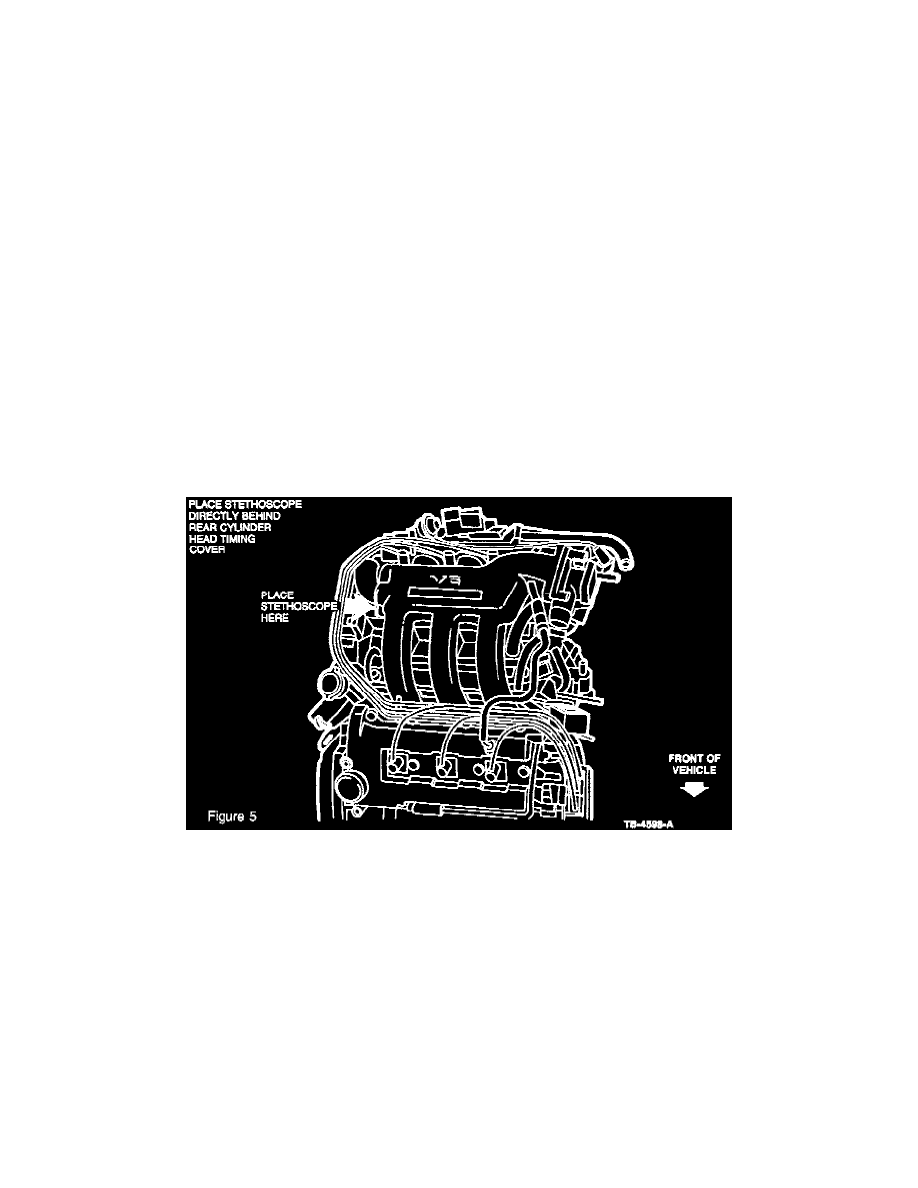Probe V6-153 2.5L DOHC (1994)

6.
Allow the idle to stabilize, then:
a.
Feed the cleaner into the engine by releasing the pliers while maintaining engine speed between 1500-3000 rpm until halt of the cleaner is
used.
NOTE:
REGULATE THE CARBON CLEANER FEED RATE BY PARTIALLY KINKING THE FEED TUBE.
b.
Allow the idle to drop; engine should stall. If it does not, shut engine oft.
7.
Let vehicle sit for at least 6 hours, or up to 24 hours. This allows the cleaner to saturate the carbon in the combustion chamber.
8.
Flush the remaining carbon from the engine by repeating Steps 1-6, using the remaining cleaner. Do not let the engine stall.
9.
Remove the feed tube and reconnect the purge control vacuum line.
NOTE:
AFTER PERFORMING A CARBON CLEANING PROCEDURE, THE OIL AND FILTER SHOULD BE CHANGED IN ORDER TO REMOVE
ANY CONTAMINANTS IN THE OIL.
10.
Take the vehicle on a 5-6 km (3-4 mile) test drive using the full rpm range to remove any remaining cleaner or carbon from the engine.
Let the vehicle sit for a minimum of 12 hours. Start the engine. If the engine noise is gone on start-up, revised cylinder heads are available for service. To
order the revised cylinder heads call: Cylinder Head Exchange Program, (800) 829-3353 - 9:00AM-5:00PM EST.
B. Camshaft Friction Gear Noise
A heavy tapping noise may be heard from the right rear cylinder head exhaust camshaft area directly behind the timing cover (Figure 5). The tapping
starts during engine warm-up and the noise level can increase as the engine reaches normal operating temperatures. In some cases, the noise may begin to
oscillate in 3-5 second intervals.
Using a stethoscope, or equivalent, listen to the engine just behind the timing belt area on the valve covers (Figure 5).
If a "tapping" or "clacking" type noise is heard, refer to TS8 Article 97-17-13 for the proper repair procedure.
C. Hydraulic Lash Adjuster (Hla) Noise
A noise heard from the top of the engine area which can be described as a "ticking" or "clattering" type noise at various engine temperatures. The noise
level varies depending on the number of HLA's that are making the noise. HLA noise can occur due to internal failure of the HLA, air trapped in the
lubrication system, or low oil pressure. Verify the concern by:
1.
Check oil and filter condition. Check for proper engine oil level. In many cases a simple oil (Motorcraft 5W30) and filter (Motorcraft FL-822)
change may eliminate the noise concern. If after changing the oil and filter, the noise is still present, proceed to Step 2.
NOTE:
SOME HLA NOISE WHEN THE ENGINE IS COLD AND FIRST STARTED IS NORMAL. THE LENGTH OF TIME THE HLA NOISE LASTS
